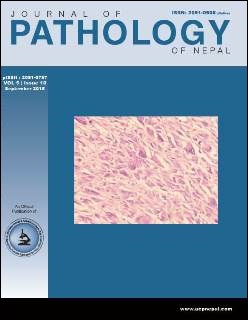Cervical pap smear- A prospective study in a tertiary hospital
DOI:
https://doi.org/10.3126/jpn.v5i10.15639Keywords:
Cervical cancer, pap smear, screening, Bethesda system, intraepithelial lesion, malignancyAbstract
Background: Cervical cancer is a leading cause of mortality and morbidity among women worldwide and most common gynaecological cancer in developing countries. Papanicolaou smear is a simple and cost effective screening test for cervical cancer. The aim of this study is to evaluate and interpret the cervical pap smear cytology in a tertiary hospital. The interpretation and reporting of the pap smear is based on 2001Bethesda system.
Materials and methods: This is a prospective study conducted in a tertiary hospital, Nepal Medical College over a period of two and a half years (January 2013 to June 2015). All cervical pap smears received in the department of Pathology in the study period were included.
Results: A total of 4160 cervical pap smears were reported in the study period. Majority of the cases were Negative for Intraepithelial lesion or malignancy (87.9%). Bacterial vaginosis, atrophy and reactive cellular changes associated with inflammation were seen in 5.3%, 2.4% and 1.5% cases respectively. Epithelial cell abnormalities (0.5%) include Atypical squamous cells of undetermined significance, Low grade squamous intraepithelial lesion and High grade intraepithelial lesion. 88% of Low grade squamous intraepithelial lesion was seen in reproductive age group (20-45 years).
Conclusion: Cervical cancer is the most common gynaecological cancer in the developing countries. Pap smear is the simple and cost effective screening tool to detect pre invasive cervical epithelial lesions.
Downloads
Downloads
Published
How to Cite
Issue
Section
License
This license enables reusers to distribute, remix, adapt, and build upon the material in any medium or format, so long as attribution is given to the creator. The license allows for commercial use.




